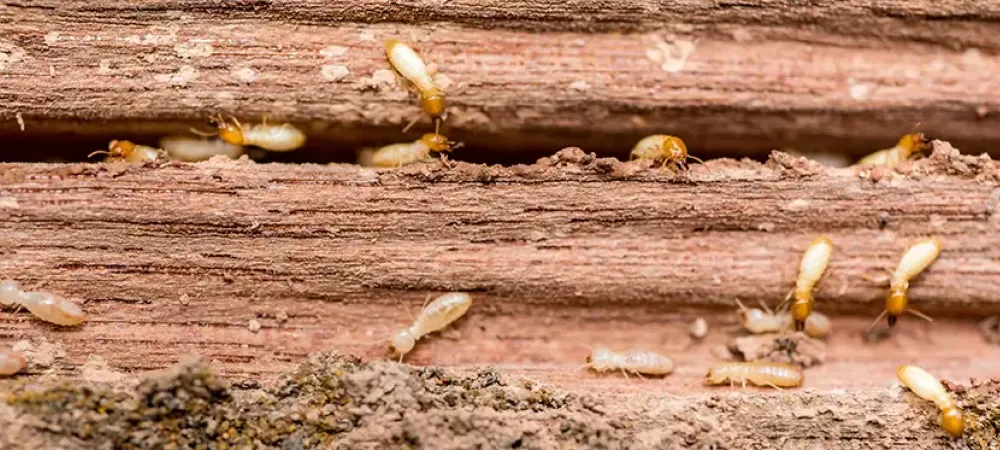Subterranean Termites in San Diego

What Are Subterranean Termites?
Subterranean termites are a species of termite that live primarily in the soil rather than within the wood itself, like their drywood cousins. The primary culprit in San Diego is the Reticulitermes hesperus, a termite with a penchant for chewing through the structural integrity of your home.
These termites build extensive underground colonies, often extending their reach into the wooden elements of your house through a network of mud tubes. As their colony grows, which can reach into the millions, the potential for damage skyrockets. Subterranean termites are particularly problematic in San Diego due to the region's warm, humid climate, which provides the perfect breeding ground for these voracious pests.
What Do Subterranean Termites Look Like?
Subterranean termites come in three distinct castes, each with their own unique appearance:
- Reproductives (Alates or Swarmers): Dark brown to almost black bodies, approximately 1/4 to 1/2 inch long, with two pairs of translucent, slightly milky-colored wings. These winged termites are the ones you're most likely to spot as they take to the skies in search of mates during the spring swarming season.
- Workers: Cream-colored bodies, about 1/8 to 1/4 inch long, with small jaws for gnawing on wood. Workers are the ones responsible for the extensive damage caused to your home's wooden structures.
- Soldiers: Creamy white bodies with darker, brownish heads, similar in size to workers, with large mandibles for defending the colony. Soldiers play a crucial role in protecting the termite's underground fortress.
Do Subterranean Termites Fly?
Yes, subterranean termites can fly - but only during their reproductive stage. Swarmers and alates take to the skies in search of mates, typically during the warm, humid spring months. After mating, they shed their wings and get to work establishing a new colony, often within or near your home.
How to Get Rid of Subterranean Termites
Dealing with a subterranean termite infestation is no easy task, but there are several effective methods to consider:
- Chemical Treatments: Applying insecticides around the foundation of your home can create a barrier to prevent termite entry. These treatments are designed to target the entire colony, not just the visible pests.
- Bait Systems: Strategically placed bait stations can be used to attract and eliminate the entire termite colony. As the workers consume the poisoned bait, it's carried back to the nest, slowly eradicating the infestation.
- Professional Services: For comprehensive and long-lasting control, it's often best to enlist the help of a professional pest control service. These experts can assess the extent of the problem and implement the most appropriate treatment plan. They have the knowledge and tools to effectively address subterranean termite infestations, ensuring your home is protected.
Prevention Is Key
The best way to deal with subterranean termites is to prevent an infestation in the first place. Some key preventive measures include:
- Reducing earth-to-wood contact around your home's foundation.
- Repairing any cracks or gaps in the foundation.
- Properly managing moisture levels around the home.
- Conducting regular inspections to catch any signs of termite activity early.
Don't let subterranean termites catch you off guard. Stay vigilant, keep an eye out for the signs of an infestation, and take proactive steps to protect your home from these silent destroyers. Your property - and your peace of mind - will thank you.

